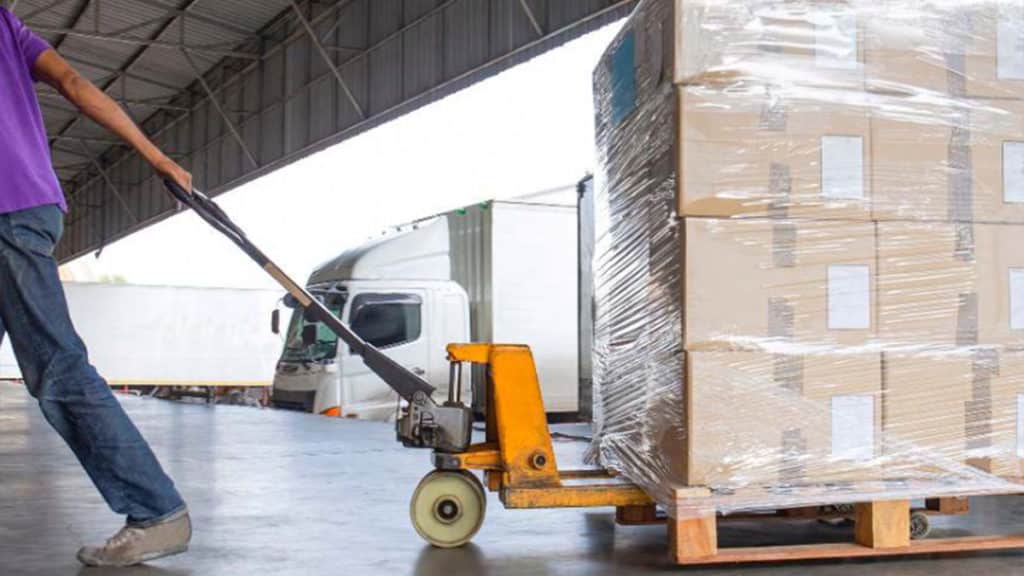
Rising online purchases over the past few years have increased the need for LTL. Learn how shippers are rethinking LTL freight management.

Rising online purchases over the past few years have increased the need for LTL. Learn how shippers are rethinking LTL freight management.
Ecommerce sales rose swiftly during the pandemic, significantly increasing demand in the less-than-truckload (LTL) space. This has caused shippers to change their shipping choices.
BlueGrace Logistics sought to learn more about this dynamic and teamed up with FreightWaves to survey shippers about the state of the LTL market and their approach to LTL shipping in today’s environment. The following is a recap of what we learned.
Shippers shared their thoughts about shipping and consumer demand in our survey. Here’s what they had to say about the current environment and how they are dealing with it:
Receptive to alternate ports
Our survey revealed that port congestion on the West Coast has made shippers more receptive to using alternate ports when bringing freight into the U.S. This could partially explain why port congestion did not decrease among East Coast ports even when the West Coast saw a reduction.
Market stability approaching
More than 70% of shipper survey respondents are currently both replenishing inventory and trying to meet demand. This points to a slow rebalancing between supply and demand. But despite early signs of potential market stabilization, shippers expressed that they aren’t anticipating the market to level off in the immediate future.
Capacity issues
Although demand has dipped slightly, carriers continue to grapple with pandemic-fueled equipment delays and the worsening driver shortage. So, many shippers continue to struggle with securing capacity at competitive rates.
According to our survey, some shippers say the market won’t stabilize this year but believe new capacity could lead to stabilization. While these respondents think new capacity could stabilize the market, they don’t expect it to materialize this year.
Consumers are paying the price
Shippers have had to change their habits to cope with distribution network congestion, some of which may be influencing the decrease in consumer demand. The most reported habit changes were consumer price increases, by 70% of surveyed shippers, and expected service level decreases, by 69% of respondents. It turns out that both changes are harming consumers more than companies.
Service levels are most impacted by distribution network congestion, which in turn is lowering shipper expectations. Not a single company said it has increased its transportation spend due to network congestion, confirming that shippers are passing these costs on to consumers instead of absorbing them.
Shifting market conditions have impacted the ways shippers choose to move their freight. Increased online shopping, coupled with consumers’ expectations of lightning-fast shipping, has prompted shippers to frequently turn toward LTL to meet growing demands according to 94% of surveyed shippers.
Although 52% of survey respondents have not transitioned transportation from truckload to LTL, 41% said that they’ve transitioned at least some of their freight in response to pandemic-fueled market shifts. Making the switch from truckload to LTL is a market trend worth considering as the popularity of online shopping continues and consumer service demands intensify, there is a chance that more shippers will consider making this type of shift in the short term.
Modal shifting from truckload to LTL can provide shippers alternative relief and service.
For shippers that do decide to make that transition, it affects almost a full quarter of their freight. So, modal shifting from truckload to LTL can provide shippers alternative relief and service. This volume is another indicator that LTL may be becoming a better fit for shippers’ needs as consumer behaviors evolve.
LTL providers are diligently working to add additional capacity to meet demand and will need to continue increasing over the next few years if this trend continues. This is especially true if about 54% of shippers are correct when they predict increased LTL demand will continue in perpetuity.
Although many shippers are choosing LTL over truckload to meet their needs, they are facing many of the same challenges they faced with truckload shipping.
Surveyed shippers identified three main challenges when it comes to LTL shipping:
While current market conditions could be blamed for these challenges, shippers still expect higher performance levels from LTL providers. Although shipper-provider relationships are currently strained, it’s important to address these challenges to ensure harmony in the future.
Control of the relationship was the most important factor.
Shippers have choices when creating their LTL strategy and selecting providers. They can work directly with asset-based individual trucking companies or partner with a 3PL (third-party logistics) provider with extensive experience and knowledge in LTL service. Control of the relationship was the most important factor, selected by 82% of respondents choosing to work directly with asset-based LTL providers. Additional factors selected by over 50% of surveyed shippers included:
Cost/pricing/discounts was the most important factor selected by 71% of respondents choosing to work with 3PLs that provide LTL service. Additional critical factors for these businesses included:
Increasing online shopping and persistent consumer service demands have shifted shipper preference to LTL. Over 41% of shippers have already started transitioning a sizeable portion of their existing truckload freight to LTL, and others are expected to do the same as these trends continue. In response to this increased demand, LTL providers are striving to meet shipper LTL capacity and service requirements.
Shippers report comparable challenges concerning LTL as they’ve had with truckload freight, including service, cost, and capacity. Although these issues could be attributed to the currently strained market, LTL providers are working to address them to retain shippers as the marketplace continues evolving.


Get expert logistics insights delivered straight to your inbox
"*" indicates required fields